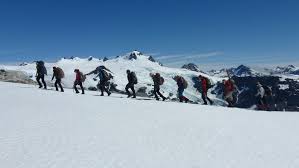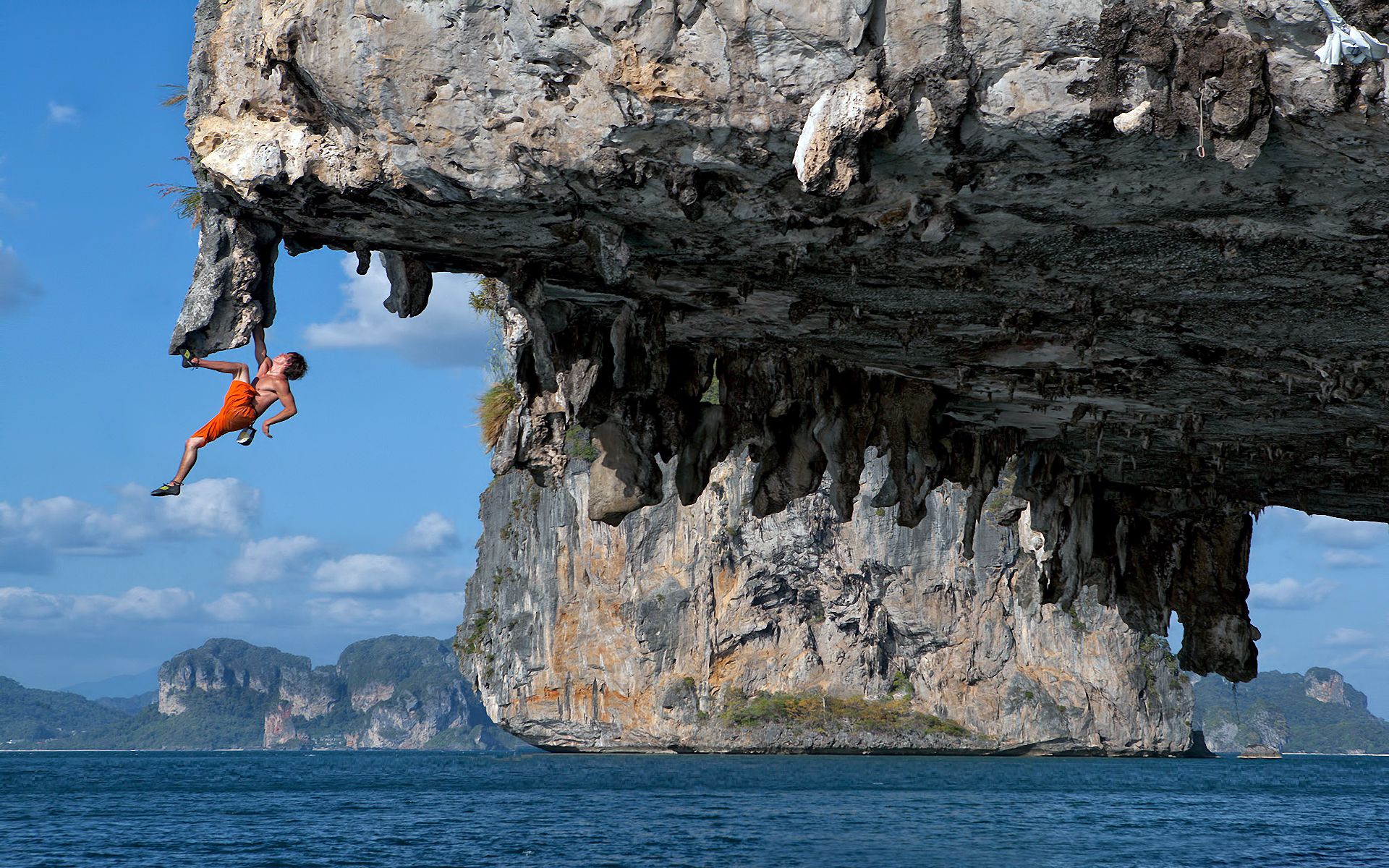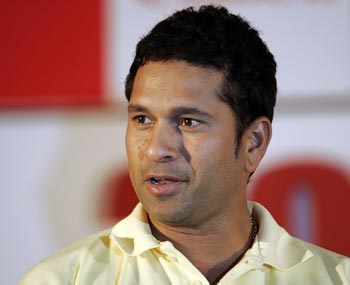Combining Thrill and Beauty- Mountaineering
If there is one sport that combines thrill, excitement and beauty at the same time, it is mountaineering. Along with the exhilarating adventure of climbing high peaks, it gives one a chance to relish the scenic beauty of nature. While mountain climbing initially began as an attempt to scale some of the highest mountains in the world, today it is a full-fledged sport with expertise depending on the different properties of the mountain and consists of three specializations- rock-craft, snow-craft and skiing, depending on whether the route chosen is over rock, snow or ice.
The development of mountaineering as a sport can be traced to the mid-19th century. Sir Alfred Wills, who climbed the Wetterhorn in the Swiss Alps, spread the culture of mountaineering in England and this led to the formation of the Alpine Club-the first mountaineering club in 1857. This is the reason mountaineering is sometimes called alpinism, referring to climbing mountains for the purpose of enjoying climbing itself as a sport or recreation. But during that period, there was no special equipment or proper guidelines for those involved in the sport.
Towards the 1870s, mountaineering developed as a professional sport with a body of guides, equipment and fixed guidelines. As mountaineering acquired an international outlook, expeditions were carried out to explore the hitherto unconquered peaks. By the end of the 19th century, peaks in ranges such as the Andes, Caucasus, Cordillera had been successfully climbed.
However, the mighty Himalayas in the Asia still remained invincible, with a number of unsuccessful attempts made at ascending its peaks. Oscar Eckenstein, the English mountaineer who had tried to scale the Mount Godwin Austen, better known as the K2, created new equipment in the form of crampon and used better climbing techniques in the form of shorter ice axes. Due to these improvements, all except one of the 14 highest mountains of the Himalayas had been climbed, with the exception of Mount Everest. However, not long after, history was created on May 29, 1953 by Sir Edmund Hillary and Tenzing Norgay, when they finally reached the summit.
As the development of the sport progressed, there emerged two styles of mountaineering- Alpine Style and the Expedition Style. Alpine mountaineers generally climb medium-sized mountains like the Rockies or Alps. It involves a mixture of snow climbing, ice climbing, and glacier travel, where climbers generally single carry their loads between camps, in a single push for the summit. In contrast to this, expedition mountaineers climb higher peaks, such as those of the Himalayas and deal with longer routes, extended time period, foreign logistics, more severe weather, and additional skills unique to expeditionary climbing.
The sport is governed by the International Climbing and Mountaineering Federation, which was formed in 1932 by 30 Alpine Clubs. It develops and maintains safety standards for the equipment used in mountaineering. Headquartered in Bern, Switzerland, it manages and controls the ice climbing competitions.
Though it may give one the adrenaline rush, the sport has its share of dangers and hazards. One of the major concerns is loss of life. Over the course of years, many climbers have lost their lives while trying to climb mountains. The other major issue is shelter as the weather in the mountains may be very unpredictable. Though the traditional forms of lodging include huts and tents, these have proved to be unsafe. The most common form of accommodation for mountaineers these days is a base camp. A base camp is an area used for staging an attempt at the summit. It is positioned in such a way as to be safe from the harsher conditions that prevail at the higher altitudes.
The other objective hazards include solar radiation, snow slopes, avalanches, volcanic activity, falling rocks and ice, and other such factors that are beyond human control. Falls due to inattention, fatigue or inadequate technique and equipment malfunction are other major concerns. The viable solution that exists to these problems is to select and follow a route using one’s skills and experience.
However, the hazards have not deterred people from taking up mountaineering. Due to the terrain in India, which boots of a vast stretch of the colossal Himalayas to its north, mountaineering is very popular. Some well-known mountaineers from India include Bachendri Pal (first Indian female to ascend Mount Everest), Arjun Vajpai (youngest Indian to climb Mount Everest at the age of 16 years), M.S. Kohli (one of three people in the world who in 1962 spent three nights at 27,650 feet on Everest, two without oxygen and also led the first successful Indian expedition to Mount Everest in 1965. From 1965 to 1968 he led the world’s longest and highly sensitive Indo-American expedition to Nanda Devi and Nanda Kot) and Santosh Yadav (first woman to climb the Everest twice).
In India, mountaineering is governed by the Indian Mountaineering Foundation, a body that organizes, supports and provides a base for expeditions. The organization has undertaken expeditions in a number of ranges including the Garhwal, Kumaon, Karakoram and the Hindu Kush. The Nehru Institute of Mountaineering in Uttarakashi provides professional training to young enthusiasts who are keen on pursuing mountaineering as their career. The institute is considered as the most prestigious establishment in Asia and has trained mountaineers to face extreme hazards. The Himalayan Mountaineering Institute in Darjeeling is another premier institute that provides specialized training to those who are passionate about the sport. The fact that the mountaineers from these institutes were called upon to help in the rescue efforts in Uttarakhand last year provides testimony to the fact that the training they give to their students is of an expert nature.
In all, mountaineering offers people an adrenaline-charged experience, along with an opportunity to explore nature at its best and the chance to set world records!!!





